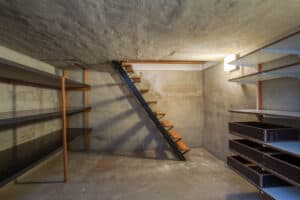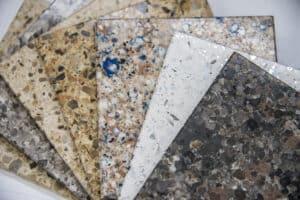
Drywall joint compound is a beneficial substance that can finish off and complete a wall.
With joint compound, there are certain environmental conditions that will keep this useful product good for quite some time.
However, there is a point when you will have to evaluate whether or not your joint compound is still good.
If you have an old container of joint compound, we have all the information you will need to determine if it is still good.
Does Joint Compound Go Bad?

Joint compound will go bad, but most of the time, it will take about four or five months for an open container to go bad.
There are, however, a few different reasons that joint compound can go bad.
If you want to preserve it for a long period of time, you will have to make sure that you store your joint compound in the proper environment.
Factors that Lead to Joint Compound Going Bad

There are a few factors which can make joint compound go bad a bit faster.
Here are the most common things you will have to look out for.
1. Air
Joint compound comes in a container with a sealed top.
Until that seal has been broken upon opening, there is no way for air to get to the joint compound.
As soon as the compound is exposed to air, it can start to dry out.
Of course, this is a good thing when applying to walls as you will want the product to dry so that you can paint over it.
However, a can filled with dry joint compound will no longer be useful.
Once the container of joint compound is opened, it is hard to get it to seal the same way again.
Even though you will have the top on, air will continue to be able to get in the container.
Make sure that you get the top on as tightly as possible and then keep it in a temperature controlled environment so that it does not go bad.
2. Water
Sometimes adding a little water to your compound will help to make sure that it does not dry out.
Try to make sure you add just a slight amount and don’t add it with a putty knife.
If you do this, you do risk some mold growth inside the putty as it is closed.
The putty knife can sometimes carry bacteria on it, and that will cause mold to grow.
A few drops of water should be all it takes to get the moisture you need and keep the compound good until the next time that you need it.
3. Mold
If a joint compound product is exposed to bacteria, it will grow mold.
There are certain types of joint compounds that are resistant to mold.
These types of joint compounds tend to be used in bathrooms and kitchens where there are higher moisture levels.
Since this type of joint compound is resistant to mold, it will keep your joint compound from going bad quite as quickly.
Of course, this type of compound can dry up just as easily, but you won’t have to deal with any of the molding issues that you may have to deal with otherwise.
How to Tell If Your Joint Compound Has Gone Bad

There are a few ways to tell if your joint compound has gone bad.
One of the most common ways is the look of it.
If you see that the product is dry or it has separated, it is likely not going to be very good.
Sometimes you may need to mix it up a little, but for the most part, if it is not quite like a putty anymore, it is done.
Another issue that you can sometimes run into is a joint compound that smells.
Even though the compound may look normal, if it doesn’t smell right, it has expired.
This smell means there is likely some kind of bacteria is growing which you have just not been able to see.
If you are even able to get a product like this to stick to your walls, you will end up struggling with an uneven surface or something that does not hold up for the long term.
Sometimes, there can be discoloration in the joint compound that you open.
If you notice that the color is off, the compound is not good anymore.
You can usually tell rather quickly whether or not you are going to be able to revive the joint compound.
Check the packaging of your joint compound as there usually tends to be an expiration date on the side.
This date will give you a general idea of the time that you have left with this product.
If your product is long past that date and you have had it open for quite some time, it is probably time to change it out and purchase another product.
How to Revive Joint Compound

If you want to ensure that your joint compound has truly gone bad, you may attempt to revive it.
Depending on what the issues are with the product, a revival can be a good solution.
Let’s take a look at a process you can use to help revive joint compound which may have gone bad.
Step 1: Prepare the Compound

When you open the container of the joint compound, you are going to find something that is fairly dried up.
If you notice severe discoloration or a strong odor, this compound can’t be revived.
However, if something is simply dried up, you may have a chance.
You can take the sharp end of a screwdriver and start breaking apart the spackling compound inside the container.
You should work until the pieces are broken up into what you would consider a coarse pebble or stone.
Once it is broken into chunks, you can move to the next step.
Step 2: Pouring Water

Now you will take about a ¼ cup of warm water and pour it into the container.
For the most part, you can still use the same screwdriver to mix the water in and get the chunks to break up even more.
You will notice that the chunks are starting to get smaller and blend in with each other.
At this point, you will want to have your process look like a mix of breaking up and stirring.
Step 3: Putty Knife

Now you are going to want to break out your putty knife and start to use that to mix and work with the putty.
A putty knife is very good at breaking up the chunks that you find and starting to move them around.
By now, you will probably notice that the joint compound needs just a bit more water.
The water can be poured in one tablespoon at a time.
You don’t want to add too much water because, once the substance gets soaked, it will not be something that you can continue to work with.
A joint compound is intended to be sticky.
This means that, when you put your spackle knife in, the putty should stick to it quite well.
It should not be running off the sides.
Otherwise, it will be impossible to get it to stick to the walls that you are working on.
Don’t be afraid to put water in the compound.
Just make sure that you are only adding a little bit at a time.
Step 4: Storage

Once you have this joint compound mixed and back to a workable consistency, you have to think about storage.
Since you have essentially brought this compound back to life, we don’t recommend saving it.
Chances are, with the addition of the water and the tools that you used, there are a lot of bacteria in the container.
When you go to open this container next time, it will likely have some mold growth in it.
Simply use as much as you can and be glad you were able to revive a bit.
Conclusion
The fact is that joint compound does go bad.
Ensure that, when you purchase a joint compound, you choose something that will be used within a reasonable amount of time.
You will see that this product is sold in several smaller size containers.
If you only have a tiny hole to patch, buy the smallest container that you can.
Therefore, if you don’t get to use all of it, you won’t be wasting too much money.



Leave a Reply